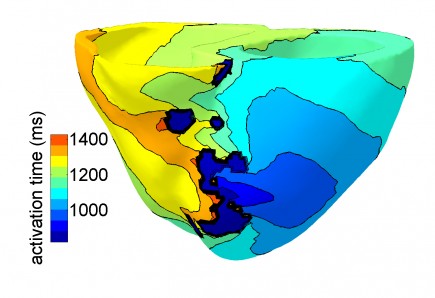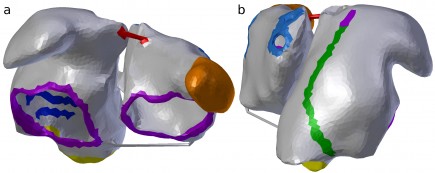Cardiac disease is the number one cause of death world wide, and a major health care cost in the industrialized world. A large number of these disease conditions are caused by disturbances in the electrical activity of the heart. Using mathematical modelling, we aim to improve understanding of these highly complex phenomena, with benefits for clinical diagnosis and interventions, as well as for the development of new drugs.

Details
One of the most important challenges in understanding cardiac electrophysiological activity in general is the very large range of spatial (at least from 10e-9 to 1 m, e.g. from protein complexes to whole human) and temporal scales (at least 10e-7 to 10e8 s, to capture behaviour from ion channel opening to disease development and ageing). Computational modelling and simulation is currently the only tool at our disposal to bridge these spatial and temporal scales, allowing us to relate dynamic processes on a cellular level to dynamics on the tissue and organ level. FCC has a long standing experience in modelling cardiac electrophysiology on multiple levels of detail, from the function of individual cells to emergent phenomena across the entire organ, using PDE formulations. We also develop ultra-fast phenomenological models which enable the study of cardiac arrhythmias in a probabilistic setting, a perspective which is needed in most real world applications.

Applications
Cardiac modelling as a technology has a multitude of applications in modern health care and medical industry. During several projects with AstraZeneca, FCC has applied modelling to evaluate the efficiency of a novel antiarrhythmic compound against atrial fibrillation. Further, we have ongoing collaborations with the University of Oxford centered around the study of arrhytmic risk resulting from cardiac infarction. Additionally, we take part in several projects concerning the application of mathematical modelling to cardiac safety in drug developent.
